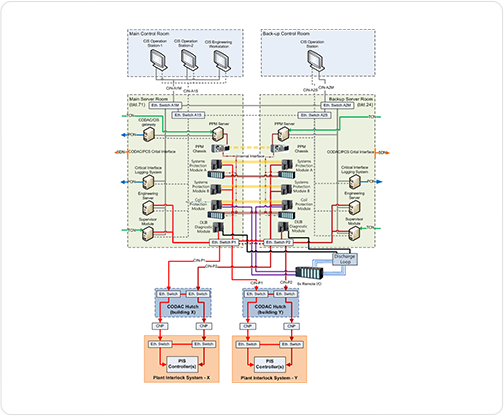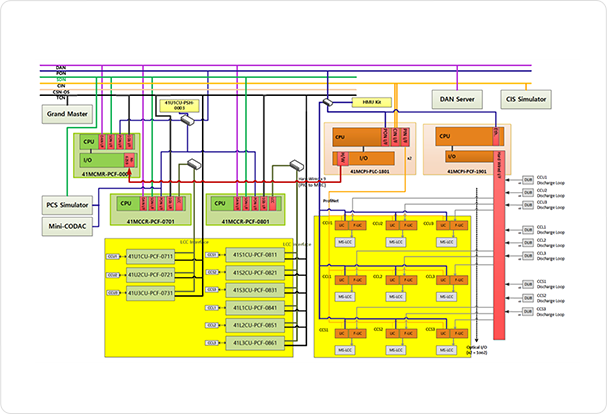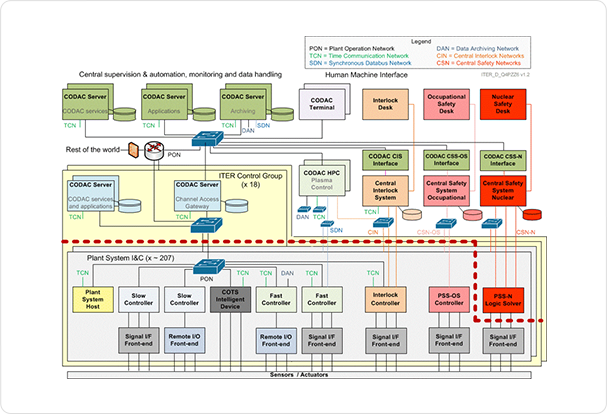Big Science
 Home
Home- Big Science
- Nuclear Fusion
- Mobiis at the ITER Project
Mobiis at the ITER Project
Nuclear Fusion
핵융합반응은 핵분열반응과 상반되는 물리현상으로 수소와 같이 가벼운 원소들의 핵들이 서로 결합하여 헬륨과 같은 좀 더 무거운 원소의 핵을 형성하는 현상이며 이때에 질량결손에 의해 생겨나는 에너지는 방출되는 입자들의 운동에너지로 나오게 되는데 이를 발전(發電)에 응용하는 연구가 핵융합연구개발입니다.
즉, 1억 5,000만℃ 이상의 고온에서 가벼운 원자핵이 융합하여 더 무거운 원자핵이 되는 과정에서 에너지를 창출해 내는 방법으로,
이러한 핵융합 반응을 연쇄적으로 일으켜 폭발에 이르게 하면 수소폭탄이고, 이를 제어해 에너지화 하는 것이 핵융합 발전입니다.
Mobiis has developed technological solutions and provided services to the nuclear fusion community since our first participation in the ITER Project in 2012.
During more than a decade, working in close collaboration with plasma scientists and fusion experts in Korea and all around the world,
our engineers and scientist have contributed to create the control tools that will be esential to operate the future power plants,
which will be based on the same source of energy that powers the Sun.
가속기는 전자, 양성자 또는 이온과 같은 전하를 띈 입자를 전자기장을 이용하여 빛의 속도에 가깝게 가속시킨 후 방사광을 발생시키거나 다른 입자와 충돌시키는 방법 등을 이용하여 원자핵 내부나 소립자의 미세 구조 등을 연구하고
새로운 희귀동위원소를 만들어내는 장치입니다.
모비스는 가속기 제어에 핵심이 되는 장비 및 시스템(LLRF, SSA, BPM, Cryo모듈, Undulator 등)을 공급하고 있습니다.
Mobiis at the ITER Project
Mobiis staff has worked in the ITER project, from our offices in Seoul and directly at the ITER site in France,
since 2014. Some of our engineers are currently embedded in the ITER teams in Cadarache, while our experts support them from Korea, continuing our core effort of developing software and hardware solutions for History's largest tokamak.
ITER CIS (Central Interlock System)
A central system that manages the protection of all plant equipment, including the gigantic superconducting coils, as well as components of the tokamak worth billions of dollars.
This requires a very high dependability, so both the hardware and software are designed with various safety requirements and specifications. The picture shows the overall structure of the ITER interlock system delivered by Mobiis.
All tests and qualifications were successfully completed and safely delivered to ITER in 2019.

ITER CIS overall architecture

ITER MCS architecture
ITER MCS-CPSS (Coil Power Supply System)
The MCS-CPSS is one of the most important plant I&C systems in nuclear fusion reactors. It is in charge of shaping the magnetic field in the tokamak by controlling the coil currents in real time, through communication with the plasma control system.
This Master Controller is in charge of reliably coordinating the output of the power converters designed and manufactured by the Korean, Chinese and Russian ITER partners and suppliers.
CODAC (Control Data Access and Communication) Framework Service
CODAC is the ITER central control system that manages and coordinates the operation of the tokamak and all the auxiliary equipment.
The Synchronous Data Network (SDN) is a high-speed network software for plasma control within CODAC, which has been partially developed by Mobiis. All central servers and plant systems connected to SDN are guaranteed reliable transmission performance within 50-microsecond latency and tolerance for communication between nodes.

CODAC, interlock and safety concept architecture
High Voltage Cubicles for the ITER Magnet Quench Detection System
The ITER Quench Detection System (QDS) is in charge of protecting the superconducting magnets and feeder systems.
The purpose of the QDS is to detect all the resistive transitions in the superconducting elements in order to activate the appropriate protection systems. Mobiis is in charge of the detailed design, prototyping and manufacturing of all the high-voltage electronics, including the signal conditioning, isolation and quench detection logic.

ITER QDS architecture


Mobiis core business, together with solutions for nuclear fusion tokamaks, is the development and construction of high-quality
hardware and software solutions for the reliable, safe and efficient operation of particle accelerators.
Mobiis is the main supplier of control software tools and beamline instrumentation hardware for all the particle accelerators currently in operation and under construction in South Korea. The Pohang 4th Generation Light Source (PAL) and the Daejeon Heavy Ion Accelerator (RAON),
as well as RAON and other domestic medical and industrial accelerators, run with software and hardware solutions developed by Mobiis engineers.
Mobiis is also present in international particle accelerator projects such as the European Spallation
Source in Sweden, the ALBA synchrotron in Spain and the ISIS neutron source in the United Kingdom.